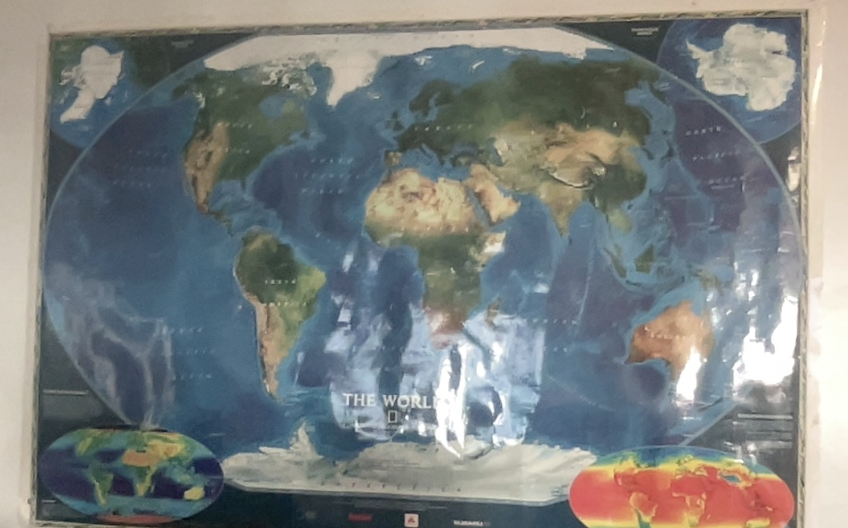With over a billion global users, TikTok is a main social media platform where users can create, share and discover short form videos. However, the concerns of data privacy and national security have led to conclusions about potentially banning the popular app in the US due to its Chinese ownership by ByteDance. This ban could impact content creators and small business owners who rely on the platform for their success and marketing.
TikTok has become a huge source of income for many creators, but the potential ban on the app has raised concerns about their financial stability and business. For example, Lexi Larson, a TikTok creator, shared how TikTok helped her save $50,000, which she used to start her own loungewear business, Sunday Cherries. This ban could affect people like Lexi Larson who would end up having less profit and lose her marketing. According to a report by NeoReach, around 52% of TikTok creators earn more than $15,000 annually, while 7% earn $200,000 or more. This indicates that a significant portion of creators rely on TikTok for a large part of their income. This potential ban on TikTok could lead to huge losses for creators, and many creators depend on brand partnerships and sponsored posts for their income. A ban can mess up these revenue streams which could lead to financial instability. Additionally, creators may face challenges in transitioning to other platforms, as building a similar following and engagement level can be difficult. Each platform has its own way of showing content and different types of users, so creators would need to change their content to fit a new audience. This can take time and might not get the same amount of engagement or attention as TikTok, making it harder for creators to have the same success on other platforms.
Small businesses use TikTok for marketing by making short form videos and promoting their product or service to a wide group of audiences. Businesses often participate or create their own hashtags to increase brand awareness. TikTok also allows businesses to connect and partner with other influencers to get more viewers/audience and gain credibility which also allows influencers to make money by the usage of TikTok. Here are two case studies of businesses that have successfully used TikTok to build their brand: Enchanted Scrunch, a handmade scrunchie brand, gained significant attention with a viral TikTok video, leading to a major boost in both sales and social media followers. Another success story is Lala Hijabs, which achieved TikTok fame by creating creative and culturally relevant content, enhancing both their brand visibility and sales. Some alternatives that TikTok users can do if this ban takes place is to use Instagram Reels, Youtube Shorts, and/or Snapchat Spotlights, which all might not be as effective in promoting to a wide audience like TikTok but are an alternative. China’s app RedNote is quickly becoming a popular alternative to TikTok. It has a similar layout to Pinterest and focuses on short-term content.
Social media platforms like Instagram, YouTube, Facebook, X (previously known as Twitter), LinkedIn, Pinterest, and Snapchat each have unique features. Instagram is great for pictures and shopping, YouTube for videos and making money, and Facebook for connecting with people and advertising. Twitter is for quick updates, LinkedIn for professional networking, Pinterest for ideas and shopping, and Snapchat for fun, short videos. Creators and businesses have successfully used these platforms even without TikTok. For example, Starbucks used Instagram to boost sales, and a photographer used Facebook to grow his business.
As TikTok faces potential bans, creators are already exploring other platforms. “Creators have to find another platform to create content. People aren’t waiting around, you can already see that they’re already shifting. They’re moving to platforms like RedNote, Google, and Meta.” said Andrea Sealy, an Entrepreneurship teacher at The Village School. “This shift will bring more competition, requiring creators to improve their content quality to stand out.” This emphasizes a shift in the social media landscape as creators prepare for TikTok’s potential decline. It highlights how adaptability is key, with users transitioning to platforms like RedNote, Google, and Meta. This migration increases competition, encouraging creators to enhance content quality to maintain relevance and engagement.
The potential TikTok ban could significantly impact creators and small businesses that rely on the platform. For example, creators like Lexi Larson may face financial instability. Small businesses use TikTok for marketing through viral videos and influencer partnerships. Alternative social media platforms are already getting more attention with TikTok’s banning that is about to happen with content creators already beginning to transition. To stay resilient, creators and businesses should diversify on platforms like Instagram and YouTube, use AI tools, stay authentic, and be creative. Despite challenges, the digital community can innovate, stay connected, and continue growing and engaging audiences. This change shows how important it is to try different strategies, which is also a useful lesson for students at The Village School in their schoolwork and activities. Just like creators and businesses can succeed by using AI tools, being themselves, and staying creative, students can use these same ideas to handle new challenges and keep improving in their studies and personal projects.
Sources:
“10 Major Social Media Trends in 2025.” Coursera, www.coursera.org/articles/social-media-trends. Accessed 3 Feb. 2025.
“20 Businesses Finding Success on Tiktok – Examples & Guide.” JoinBrands, 2 Jan. 2025, joinbrands.com/blog/businesses-winning-big-tiktok/.
Belcher, Sara. “Lifestyle Influencer Makes over $50k off TikTok. What Will Happen to TikTok Creators If the App Gets Banned (Exclusive).” People.Com, PEOPLE, 10 Jan. 2025, people.com/tiktok-creators-who-profited-off-app-could-lose-a-lot-from-the-impending-ban-exclusive-8772178.
Jr., Jonathan Landrum, and Haleluya Hadero. “TikTok Creators Left in Limbo While Awaiting Decision on Potential Platform Ban.” AP News, AP News, 5 Jan. 2025, apnews.com/article/tiktok-influencers-content-creator-ban-079d302b938f546ffedacff32b769569.
Mikolajczyk, Karolina. “The 15 Social Media Trends That Will Shape Your 2025 Strategy.” Social Media Marketing & Management Dashboard, 18 Dec. 2024, blog.hootsuite.com/social-media-trends/.
“New Studies Quantify TikTok’s Growing Impact on Culture and Music.” Newsroom, TikTok, 16 Aug. 2019, newsroom.tiktok.com/en-us/new-studies-quantify-tiktoks-growing-impact-on-culture-and-music.
Tom Gerken, Liv McMahon & Imran Rahman-Jones. “Tiktok: What Does Trump’s Executive Order Mean and Who Might Buy It?” BBC News, BBC, 22 Jan. 2025, www.bbc.com/news/articles/clyng762q4eo.
Vanian, Jonathan. “Users Worried about TikTok Ban Appear to Be Downloading a Different Chinese Social Media App.” CNBC, CNBC, 13 Jan. 2025, www.cnbc.com/2025/01/13/as-tiktok-faces-us-ban-chinasr-rednote-tops-apple-app-store.html.








